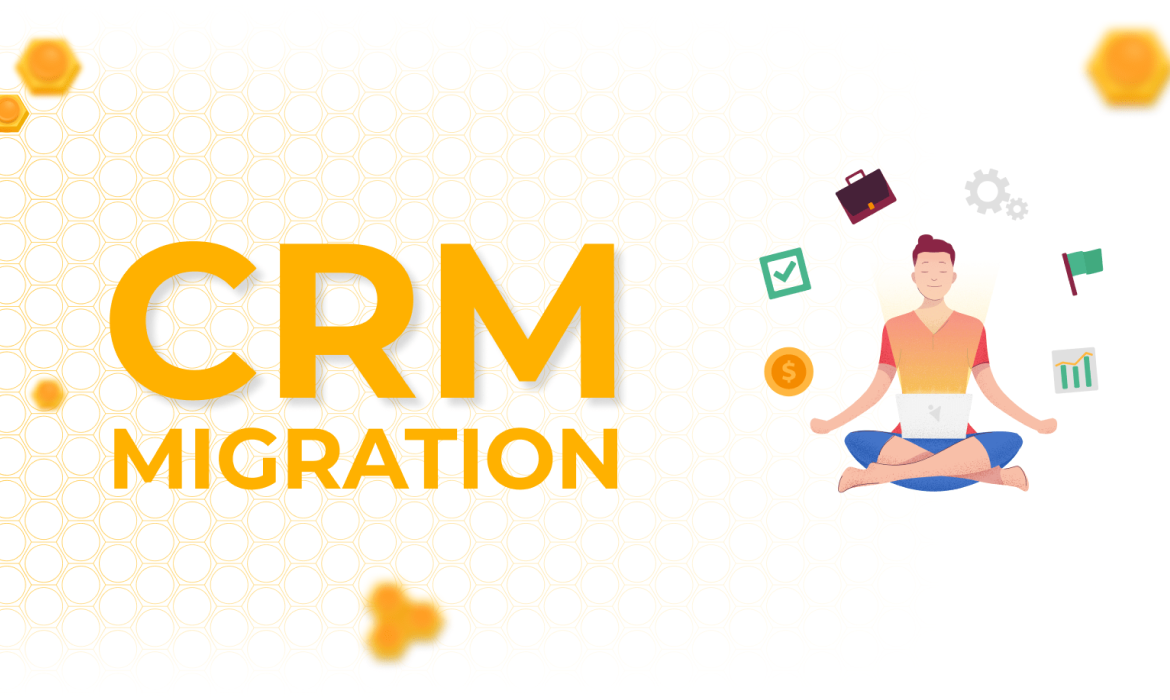It all starts with a single thought: what if the CRM we use is not as efficient as we hoped? And it’s no surprise as, according to the data collected over the past decade, up to 60% of CRM projects fail to meet expectations.
There may be many reasons to migrate CRM data to a new system: lack of customization and scalability, unclear UI, limited analysis tools, etc. But the bottom line is that the old software doesn’t work as well as wanted.
To get a better sense of CRM migration, let’s depict this process basing on a well-known epic franchise from the galaxy far far away. Welcome to the world of the Star Wars of CRM migration!
CRM Migration Episode I: The Phantom Menace
So the time has come and now you need to choose a new CRM software. We understand your confusion as making a balanced choice is a real menace that you’ve probably tried to avoid for so long.
You can make a decision based on your aims and needs. First, create a list of the main criteria for new software. The following questions will help you do that:
- What do you want to achieve with the CRM system?
- Which processes would you like to automate?
- Which tools and integrations do you need in your CRM?
- Are there any must-have features?
- How many employees are going to use the CRM? Which departments?
- What is your budget for this software?
When choosing a vendor, don’t be in a hurry. Better consult your team before migrating to a new CRM, focusing on those employees who will actually use the software. Get their feedback on the workflow and required features, and rely on their opinion when making the final decision.
The worst-case scenario is when you choose an absolutely useless and irrelevant for your team software. For that reason, determine the level or the main direction of your CRM. For instance, if you constantly use Gmail in your sales process, consider taking up a Gmail-based CRM, such as NetHunt.
CRM Migration Episode II: Attack of the Clones
It’s time to put in order and categorize the data preparing it for the migration. And I hope you’ve already guessed what Attack of the Clones means: getting rid of duplicates.
For sure, merging records with duplicates is quite a time-consuming thing to do if you do it manually. Yet, there are a lot of specialized tools and CRM data migration services that may find duplicates automatically and merge corresponding records. Some CRM systems may even offer built-in solutions for this purpose.
Probably, you have a logical question: why on earth do you need to waste your time on some duplicates? First, the data in the duplicated records may be incomplete or even contradicting if entered by different users.
Besides, your new CRM system may have some limitations on the amount of information, and then every single record will count.
Before moving to a new CRM, it’s also a good idea to decide on the data you want to proceed with and the one you’re ready to get rid of. For instance, you may have some unnecessary custom fields and labels. Besides, some information and contacts may be already outdated.
CRM Migration Episode III: Revenge of the Sith
The time has come! Rejoice you, young padawan as you are finally ready to migrate CRM data and import it to the new system. At this point, you may start considering coming to the Dark Side and switching back to the old software. We know how it feels, but stay strong: you’re almost there.
When changing CRM systems, you need to remember that all of them are different. Here you have two options: either adjust the existing data to the new CRM or set up the target software with the former structure. Both ways will work well if done by the right specialists, so choose the most convenient way.
The final step at this stage of CRM migration is reviewing the composed data mapping (correspondence of two CRM models). This task should be performed by the employees who had access to this data before and will use the software in the future.
Prepare yourself and remember: at this point, there’s no turning back.
Don’t press forward and start migrating CRM system all at once. First, make sure your data is backed up. Besides, it is crucial to perform one or several test imports to make sure that all your data will be transferred correctly and relations between records will remain the same. Test imports show if the import script is correct and allow you to fix any bugs and adjust it. As soon as you are sure that the full migration will go smoothly, go for it!
CRM Migration Episode IV: A New Hope
Yay, you’ve done it! You’ve shown this migration who’s the boss! But it’s not the reason to sit back and enjoy your coffee. Now, it’s high time for one of the most important steps – CRM integration.
Now that your team has new hope, you should make sure they take to the new CRM like a duck to water. A short manual, demos or a couple of training sessions will do. And don’t rush! Give your employees some time to get used to the new system and they will make the best of it.
CRM Migration Episode V: The Empire Strikes Back
Unfortunately, you can’t predict it all when moving to a new CRM. That’s why be ready that your CRM empire will strike back with unexpected issues. Well, it’s almost inevitable, so don’t get too upset.
The reasons for such failures may include some new or unrecorded use-cases, problems of collaboration among teams and much more. Of course, you may get really lucky and not encounter such issues but let’s face it:
Most importantly, stay cool and don’t lose your control. You can easily fix everything by turning to the CRM customer support and describing your problems. Be sure: they will take all necessary measures or recommend you an efficient solution.
CRM Migration Episode VI: Return of the Jedi
Congratulations! Your business is back on track and now you are ready to thrive with a new CRM system. Yet, it is still a good idea to freeze your old software and have access to it in case of some overlooked details. And don’t worry if you don’t get any immediate results with a new CRM. Give your team some time to get used to the system and customize it and you’ll be on a roll!
Further reading: How to keep CRM data clean and reliable
The Final Word
Though migrating to a new CRM may seem quite a pain in the neck, you may facilitate it with thorough preparation. This way, you may decrease the migration time to a couple of days and have much less of a headache. Be patient and consistent and you’ll nail it! You should also think about how to avoid or protect your data from unplanned loss. For such cases, many companies use different deleted file recovery.
If you struggle with migrating your data to NetHunt CRM, turn to our support team and get the answers.
To get more tips and hints on CRM implementation and productivity, subscribe to our newsletter or follow us on Facebook.
Table of Contents
Crack the sales formula with CRM Lab
Twice a month, receive actionable CRM content to your inbox.




